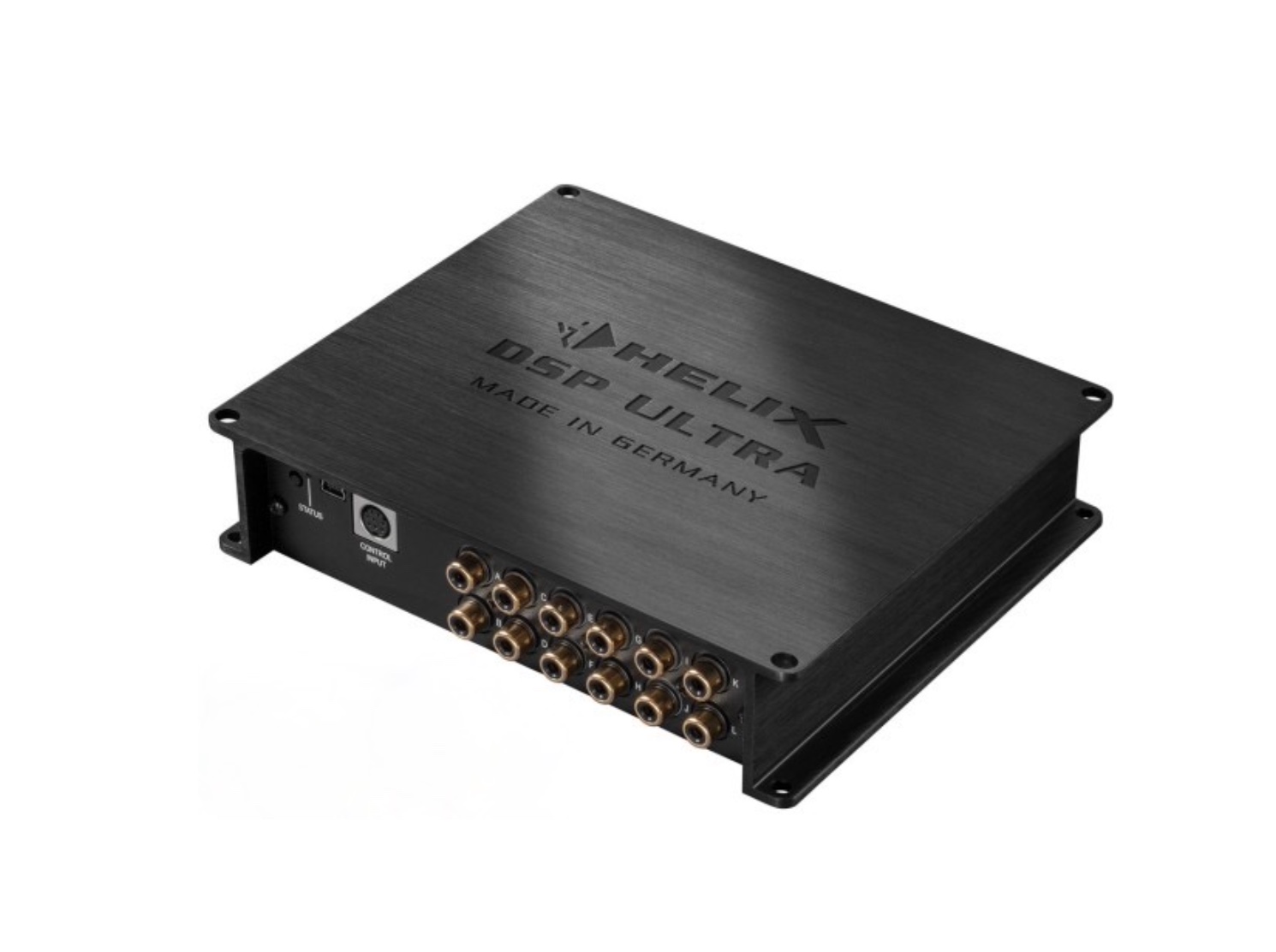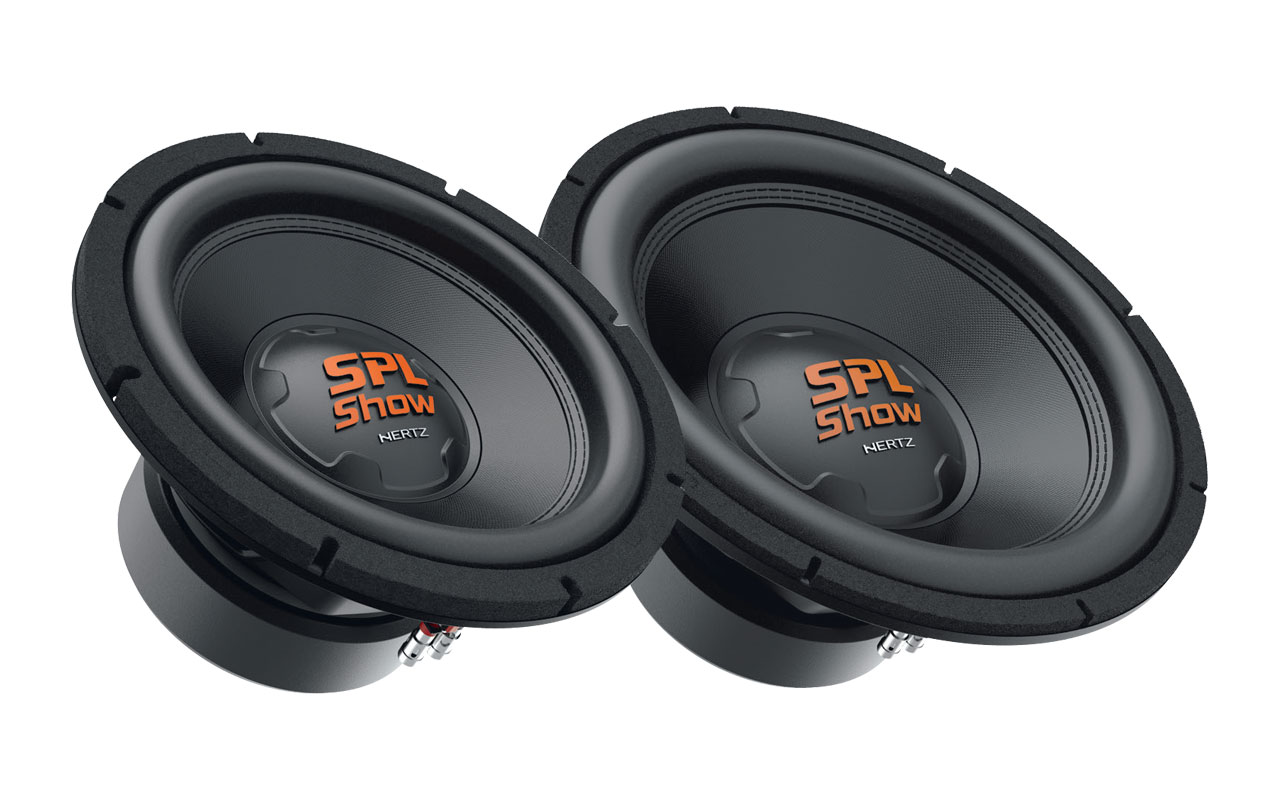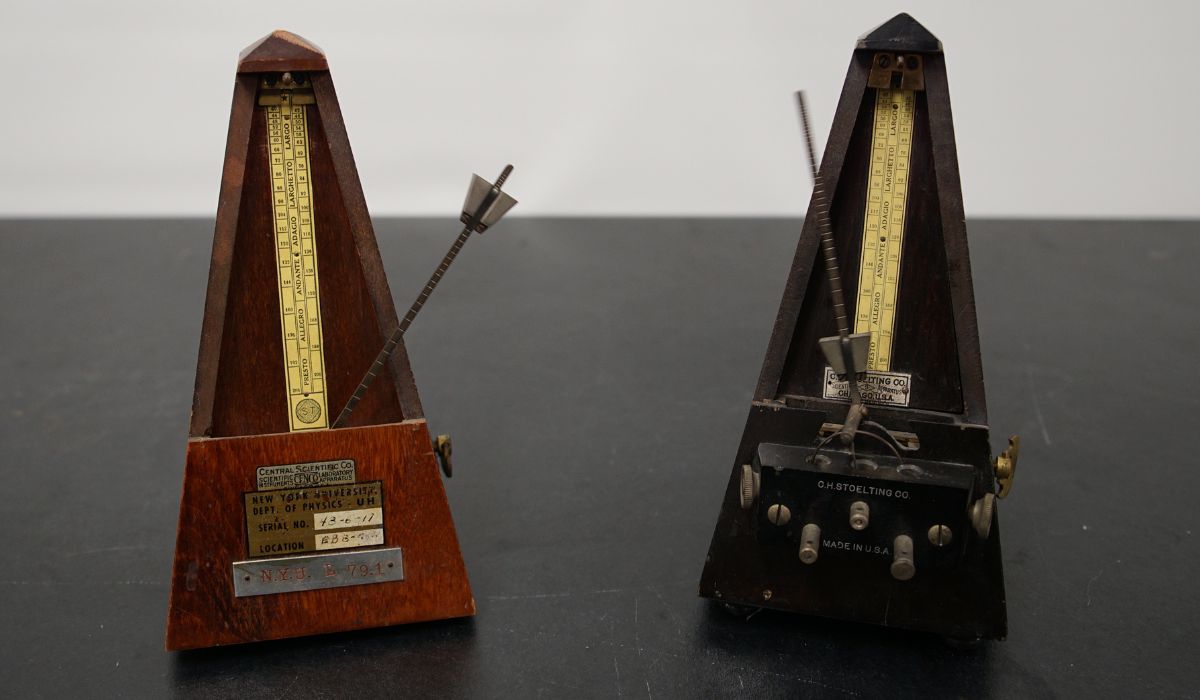Home>Devices & Equipment>Car Audio>What Does RMS Mean In Car Audio


Car Audio
What Does RMS Mean In Car Audio
Published: February 6, 2024
Discover the meaning of RMS in car audio and its significance in delivering high-quality sound. Learn how it affects your car audio system's performance.
(Many of the links in this article redirect to a specific reviewed product. Your purchase of these products through affiliate links helps to generate commission for AudioLover.com, at no extra cost. Learn more)
Table of Contents
Introduction
Welcome to the world of car audio, where sound quality and immersive music experiences are the ultimate goal. Car audio enthusiasts are constantly on the lookout for ways to enhance their in-car sound systems, and one key factor that plays a crucial role in achieving optimal audio performance is RMS (Root Mean Square) power.
RMS refers to the continuous power output that a car audio component can handle over long periods of time without distortion or damage. Understanding RMS is essential for anyone looking to create a high-quality car audio setup that delivers the best possible sound reproduction.
In this article, we will explore what RMS means in car audio, its importance, and how it differs from peak power. We will also discuss the factors that affect RMS power and the benefits of matching RMS ratings for car audio components. Additionally, we will debunk common misconceptions surrounding RMS in car audio.
So, whether you’re a car audio enthusiast looking to upgrade your system or a beginner who wants to delve into the world of car audio, this article will provide you with the knowledge you need to make informed decisions and achieve superior sound quality in your vehicle.
Understanding RMS in Car Audio
Root Mean Square (RMS) is a term used to describe the continuous power output of a car audio component, such as an amplifier or a set of speakers. It represents the amount of power that can be delivered consistently, without distortion or damage, over an extended period of time.
RMS power is a more reliable indicator of a component’s performance compared to peak power, as it represents the typical power output during normal operation. While peak power refers to the maximum power a component can handle for short bursts, RMS power provides a more accurate representation of sustained power handling capabilities.
When it comes to car audio, having a proper understanding of RMS is crucial for achieving balanced and distortion-free sound reproduction. By matching the RMS ratings of different audio components, such as amplifiers, speakers, and subwoofers, you can ensure that they are compatible and will work together harmoniously to deliver optimal performance.
It’s important to note that the RMS ratings of car audio components are typically given for a specific impedance, usually 4 ohms. Impedance refers to the electrical resistance that a component presents to the flow of current. Matching the impedance of your components to the amplifier’s output impedance is essential to prevent damage and achieve the best possible sound quality.
While RMS is a critical factor to consider in car audio, it’s also essential to understand that it’s not the sole determinant of sound quality. Other factors, such as signal-to-noise ratio, frequency response, and speaker sensitivity, also play significant roles in delivering clear, detailed, and dynamic audio.
In the next section, we will delve deeper into the importance of RMS in car audio and how it differs from peak power, providing you with a comprehensive understanding of this crucial aspect of car audio systems.
Importance of RMS in Car Audio
The importance of RMS in car audio cannot be overstated. It is the metric that determines the continuous power output of an audio component, allowing you to make informed decisions when selecting and matching audio equipment for your vehicle. Here’s why RMS is crucial in car audio:
1. Sound Quality: RMS power directly affects the sound quality of your car audio system. By choosing components with appropriate RMS ratings, you ensure that they can handle the continuous power requirements of your music, resulting in clean, distortion-free sound reproduction. Proper power handling prevents audio components from operating beyond their limits, reducing the risk of damaging your system and preserving audio clarity and fidelity.
2. Compatibility: Matching the RMS ratings of different car audio components is essential for ensuring compatibility. For example, a speaker with an RMS rating of 50 watts should be paired with an amplifier that can deliver around 50 watts RMS per channel. This balanced power distribution ensures that each component operates optimally and enhances the overall sound performance of your system.
3. Component Longevity: By selecting audio components with appropriate RMS ratings, you also extend their lifespan. Underpowering or overpowering audio components can cause premature wear and tear, leading to distorted sound or even component failure. Balancing the power output with the component’s RMS rating ensures that they operate within their designed parameters, prolonging their lifespan.
4. Preventing Distortion: Distortion occurs when an audio component is pushed too hard and exceeds its power handling capabilities. RMS power helps you choose components with sufficient continuous power handling, preventing distortion and preserving sound quality. Distortion can sound harsh and unpleasant, degrading the listening experience and affecting the overall enjoyment of your car audio system.
5. Efficiency: Matching RMS ratings also contributes to overall system efficiency. When audio components are properly matched in terms of power handling, they work together more efficiently, maximizing the power transfer and minimizing wasted energy. This not only improves sound quality but also helps preserve your vehicle’s electrical system by reducing strain and potential voltage drops.
Understanding the importance of RMS in car audio empowers you to make informed decisions when selecting and matching audio components for your system. By considering RMS ratings, you can ensure a harmonious and efficient audio setup that delivers exceptional sound quality and enhances your overall in-car listening experience.
RMS vs. Peak Power
One common source of confusion in car audio is the difference between RMS (Root Mean Square) power and peak power. Understanding the distinction between these two power measurements is crucial when evaluating the capabilities of your car audio system. Here’s a breakdown of RMS power and peak power:
RMS Power: RMS power refers to the continuous and sustained power that an audio component can handle over an extended period of time without distortion or damage. It represents the typical power output during normal operation. The RMS rating is a reliable indicator of a component’s performance and is measured in watts. Matching the RMS ratings of different components ensures compatibility and balanced power distribution.
Peak Power: Peak power, on the other hand, refers to the maximum power that an audio component can handle for short and occasional bursts. It is the maximum power output that a component can endure in the most extreme situations. Peak power is typically measured in watts as well, but it does not provide an accurate representation of continuous power handling capabilities. It is important to note that peak power specifications may sometimes be exaggerated or inflated for marketing purposes.
In practical terms, RMS power is the more important specification to consider when selecting car audio components. This is because the majority of music and audio signals are dynamic in nature, with fluctuating power requirements. The continuous power handling capabilities of a component, as represented by its RMS power rating, determine its ability to handle such dynamic audio signals without distortion or damage.
Understanding the difference between RMS and peak power is crucial for selecting components that can handle the power demands of your audio system. It is recommended to focus on RMS power ratings when evaluating amplifiers, speakers, and subwoofers to ensure optimal performance and avoid potential issues such as overpowering or damaging your components.
Ultimately, RMS power gives you a more accurate representation of a component’s power handling capabilities during normal operation, while peak power represents its maximum capacity under extreme conditions. By paying attention to the RMS power ratings, you can make informed decisions when choosing car audio components that deliver the desired audio performance without compromising the longevity of your system.
Factors Affecting RMS Power
Several factors influence the RMS (Root Mean Square) power handling capabilities of car audio components. Understanding these factors will help you make informed decisions when selecting and matching components for your car audio system. Here are the key factors that affect RMS power:
1. Impedance: Impedance, measured in ohms, refers to the electrical resistance that a component presents to the flow of current. The impedance rating of a component directly affects its RMS power handling capabilities. It’s important to match the impedance of your components, such as speakers and amplifiers, to ensure compatibility and optimize power transfer. Failure to match impedance can result in decreased power output and potential damage to the components.
2. Thermal Dissipation: Heat dissipation plays a critical role in the power handling of car audio components. When an audio component operates, it generates heat due to the electrical energy being converted into sound. Components with efficient heat dissipation mechanisms, such as heatsinks or cooling fans, can handle higher RMS power levels without overheating. Adequate ventilation and proper installation can help maximize the power handling capabilities of your components.
3. Build Quality and Components: The overall build quality and the quality of internal components can impact the RMS power handling of audio equipment. Components constructed with higher-quality materials and better engineering can handle higher power levels without distortion or damage. Investing in reputable and well-built components increases the likelihood of achieving higher RMS power handling capabilities.
4. Wiring and Electrical System: The wiring and electrical system in your vehicle play a crucial role in delivering power to your car audio components. Inadequate wiring or insufficient power supply can limit the RMS power handling of your components. Investing in quality cables, ensuring proper wire gauge, and having a reliable electrical system can help maximize the power delivery to your car audio system, allowing the components to operate at their full potential.
5. Amplifier Power Output: The RMS power output of your amplifier is a significant factor in determining the overall RMS power handling capabilities of your car audio system. It is crucial to choose an amplifier that matches the power requirements of your speakers and subwoofers to avoid underpowering or overpowering them. A well-matched amplifier can ensure that your components work together harmoniously and deliver optimal performance.
By considering these factors, you can make informed decisions when selecting and matching car audio components for your system. Paying attention to impedance, thermal dissipation, build quality, wiring, and amplifier power output will help you maximize the RMS power handling capabilities of your components and achieve the best possible sound quality in your car audio system.
Matching RMS Ratings for Car Audio Components
Matching the RMS (Root Mean Square) ratings of your car audio components is essential for achieving optimal performance and preventing damage to your system. When the RMS ratings of your components are properly matched, you can ensure balanced power distribution, minimize distortion, and maximize sound quality. Here’s how to match RMS ratings for different car audio components:
1. Amplifiers and Speakers: The RMS power rating of your amplifier should match or slightly exceed the RMS power rating of your speakers. This ensures that the amplifier can provide enough power to drive the speakers effectively without overpowering or underpowering them. If the amplifier underpowers the speakers, it may result in poor sound quality and distortion. Conversely, if the amplifier overpowers the speakers, it can potentially damage the speakers. Matching the RMS ratings ensures a harmonious power distribution between the amplifier and speakers, resulting in optimal sound reproduction.
2. Amplifiers and Subwoofers: Similar to matching amplifiers and speakers, the RMS power rating of your amplifier should also match or slightly exceed the RMS power rating of your subwoofer. Subwoofers typically require more power to produce low-frequency bass notes effectively. By matching the RMS ratings, you ensure that the amplifier can provide sufficient power to the subwoofer for deep, impactful bass without straining the amplifier or causing distortion. This balance is crucial for a well-integrated and powerful bass response in your car audio system.
3. Impedance Matching: In addition to matching RMS power ratings, it’s important to consider impedance matching. The impedance of your speakers and subwoofers should match the output impedance of your amplifier. Mismatches in impedance can result in reduced power transfer, inefficient operation, and potentially damage the components. Always consult the specifications of your components and ensure that impedance is properly matched to achieve the best performance and prevent any impedance-related issues.
Matching RMS ratings for your car audio components not only ensures optimal performance but also helps protect your equipment from potential damage. It’s crucial to carefully consider the RMS power ratings and impedance compatibility when selecting amplifiers, speakers, and subwoofers for your system. This will result in a well-matched and harmonious car audio setup that delivers clear, dynamic, and distortion-free audio.
Benefits of Using RMS Ratings in Car Audio
Using RMS (Root Mean Square) ratings in car audio systems offers several benefits that contribute to enhanced sound quality, system longevity, and overall listening enjoyment. Here are some key advantages of utilizing RMS ratings in car audio:
1. Accurate Power Measurement: RMS power ratings provide a reliable and accurate measure of the continuous power output of audio components. Unlike peak power ratings which only represent the maximum power for short bursts, RMS ratings reflect the power output during normal operation. This allows you to select components that can handle the continuous power requirements of your music, ensuring optimal and distortion-free sound reproduction.
2. Compatibility and Harmonious System: Matching the RMS ratings of your car audio components, such as amplifiers, speakers, and subwoofers, ensures compatibility and a balanced power distribution. By selecting components with similar power handling capabilities, you create a harmonious system where each component can operate optimally without overpowering or underpowering. This results in a well-integrated audio setup, with all components working together to deliver exceptional sound quality.
3. Protection against Distortion and Damage: Using RMS ratings helps prevent distortion and damage to your audio components. When components are operated within their recommended power limits, the risk of distortion decreases significantly. Distortion can degrade sound quality and result in harsh, unpleasant audio. By properly matching RMS ratings, you ensure that your components are not subjected to excessive power levels, thus preserving their longevity and preventing potential damage.
4. Consistent Sound Performance: The use of RMS ratings ensures a consistent and reliable sound performance. Components operating within their RMS power limits will provide consistent output levels even during prolonged listening sessions. This translates to a stable and predictable listening experience, as the components are capable of delivering the intended sound without fluctuations or sudden drops in volume.
5. System Efficiency and Energy Conservation: By selecting components with appropriate RMS ratings, you optimize the efficiency of your car audio system. Well-matched components work more efficiently, minimizing wasted energy and maximizing power transfer. This not only improves sound quality but also reduces strain on your vehicle’s electrical system, potentially leading to energy conservation and preserving the battery life.
By utilizing RMS ratings in your car audio system, you ensure accurate power measurement, compatibility, protection against distortion, consistent sound performance, and system efficiency. These benefits enhance your overall listening experience, allowing you to enjoy high-quality sound while prolonging the lifespan of your audio components.
Common Misconceptions about RMS in Car Audio
There are several common misconceptions surrounding RMS (Root Mean Square) in car audio that can lead to confusion and misinformation. Understanding and debunking these misconceptions is essential for making informed decisions and optimizing your car audio system. Here are some prevalent misconceptions about RMS in car audio:
1. More RMS Power Always Means Better Sound Quality: One common misconception is that higher RMS power automatically translates to better sound quality. While adequate power is necessary for optimal sound reproduction, other factors such as speaker quality, amplifier design, and audio processing play significant roles in determining sound quality. It’s important to consider a combination of factors rather than solely focusing on RMS power when evaluating sound performance.
2. Peak Power is More Important than RMS Power: Another misconception is that peak power is more important or indicative of a component’s performance compared to RMS power. Peak power represents the maximum power that a component can handle under specific conditions. However, RMS power is a more accurate representation of the component’s continuous power handling capabilities during normal operation. To ensure consistent and reliable performance, it is advisable to focus on RMS power rather than peak power.
3. Exceeding RMS Power Ratings Leads to Immediate Damage: While it is important to operate components within their recommended power limits, exceeding the RMS power rating does not always result in immediate damage. Modern car audio components often have built-in protection mechanisms, such as clipping prevention and thermal management, that can handle temporary power overloads. However, sustained operation above the RMS power rating can lead to long-term damage and reduced component lifespan.
4. All RMS Ratings Are Accurate and Comparable: Not all manufacturers measure and report RMS power ratings in the same manner, which can lead to discrepancies and confusion. Some manufacturers may report conservative RMS ratings, while others may report exaggerated ratings. It is important to consider reputable brands and consult reliable sources to ensure accurate and comparable RMS ratings when comparing and selecting components.
5. Impedance Does Not Affect RMS Power Handling: Impedance plays a significant role in determining the RMS power handling of car audio components. Higher impedance loads tend to require less power to produce the same volume compared to lower impedance loads. The RMS power handling capabilities of components are often specified for a specific impedance level, typically 4 ohms. Neglecting impedance matching can lead to improper power distribution and potential damage to the components.
By debunking these misconceptions, you can make informed decisions when selecting and optimizing your car audio system. Understanding that RMS power is not the sole determinant of sound quality, considering the differences between peak and RMS power, and acknowledging the importance of impedance matching will help you create a well-balanced and high-performing car audio setup.
Conclusion
Understanding RMS (Root Mean Square) power is crucial for anyone looking to create a high-quality car audio system. By grasping the concept of continuous power handling, we can make informed decisions when selecting and matching car audio components, resulting in optimal performance and enhanced sound quality.
In this article, we explored the meaning of RMS power in car audio and its significance in relation to peak power. We learned that RMS power represents the continuous power output of a component, providing a more accurate measure of its sustained performance. Matching RMS ratings ensures compatibility, prevents distortion, and maximizes the longevity of our audio components.
We also discussed the factors that affect RMS power, such as impedance, thermal dissipation, build quality, wiring, and amplifier power output. By considering these factors, we can optimize power transfer, efficiency, and overall system performance.
Furthermore, we debunked common misconceptions surrounding RMS in car audio, such as the belief that more RMS power always equals better sound quality, or that peak power is more important. We highlighted the importance of considering a combination of factors, including speaker quality, amplifier design, and audio processing, to achieve the desired sound reproduction.
In conclusion, understanding RMS power in car audio empowers us to create a well-matched and efficient system that delivers exceptional sound quality. By paying attention to RMS ratings, considering impedance compatibility, and debunking common misconceptions, we can enjoy the full potential of our car audio system while preserving the longevity of our components.
So, whether you’re a car audio enthusiast looking to upgrade your system or a beginner venturing into the world of car audio, remember the importance of RMS power and apply this knowledge to curate a remarkable sound experience during every drive.











